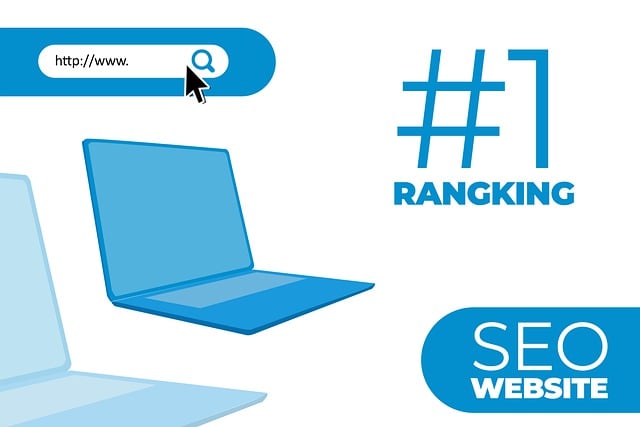In 2025, the mobile search landscape demands a strategic focus on SEO Trends such as personalized voice-activated searches, location-based services, Accelerating Mobile Pages (AMP), Local SEO optimization, AI-driven personalization, mobile-first indexing, and Augmented Reality (AR) experiences. Businesses must adapt to these trends by optimizing content for long-tail keywords, voice search functionality, mobile site speed, local NAP citations, personalized user experiences, and seamless AR interactions to stay competitive in the digital realm. Key performance indicators like CTRs, session duration, and app conversions will be crucial for evaluating success.
Mobile SEO in 2025 is a dynamic landscape where user expectations and technological advancements intertwine. As smartphone penetration reaches new heights, understanding evolving search behaviors is crucial for businesses aiming to thrive. This article explores emerging SEO trends, from voice search optimization and AMP’s persistence to the rise of local SEO and visual search. Discover how AI personalization, mobile-first indexing, and augmented reality are reshaping mobile user experiences, providing actionable insights for staying ahead in the digital race.
The Evolving Mobile Search Landscape: Understanding User Behavior in 2025

The mobile search landscape is constantly evolving, and 2025 promises significant shifts in user behavior. With the proliferation of smartphones and increased internet connectivity worldwide, mobile SEO has become a cornerstone of digital marketing strategies. Understanding user preferences and behaviors is crucial for businesses aiming to stay relevant in this fast-paced environment.
In 2025, SEO trends will heavily focus on personalized, voice-activated searches, as virtual assistants gain popularity. Users are increasingly relying on natural language queries, expecting immediate, contextually relevant results. Mobile SEO experts will need to optimize content for these interactions by incorporating long-tail keywords and ensuring mobile sites are designed with voice search in mind. Additionally, location-based services will play a more significant role, impacting local SEO as users seek nearby businesses and attractions directly from their mobile devices.
Voice Search Optimization: Tapping into the Rise of Virtual Assistants

Voice Search Optimization is set to be a key focus in the evolving landscape of SEO trends in 2025. With the widespread adoption of virtual assistants and smart home devices, more users are leveraging voice commands to search for information on their mobile devices. Optimizing content for voice search involves tailoring it to natural language queries, focusing on conversational keywords, and providing direct answers. This shift requires a strategic approach to mobile SEO, ensuring that web pages are designed to capture the intent behind voice searches.
As virtual assistants like Siri, Alexa, and Google Assistant continue to gain traction, understanding user behavior in voice search becomes paramount for businesses aiming to rank higher on mobile search engine results pages (SERPs). This includes structuring content with clear headings, using simple language, and incorporating relevant long-tail keywords that reflect common voice search queries. By embracing these SEO trends 2025 brings, brands can enhance their online visibility and deliver more effective, user-friendly experiences for mobile users interacting through voice commands.
Accelerating Mobile Pages (AMP): Still Relevant or a Thing of the Past?

In the ever-evolving landscape of mobile SEO, Accelerating Mobile Pages (AMP) has played a pivotal role in enhancing website speed and user experience. As we approach 2025, the relevance of AMP remains a topic of debate among digital marketers and SEO enthusiasts. While some predict its decline due to emerging technologies and changing user preferences, others argue that AMP is far from obsolete. In fact, with Google’s continued support and regular updates, AMP remains a powerful tool in optimizing mobile search results.
Looking ahead to the SEO trends of 2025, it’s evident that speed will continue to be a critical factor. AMP’s ability to drastically reduce page load times gives it an edge over traditional websites. As mobile searches surpass desktop usage, ensuring your content is optimized for swift loading could set your pages apart in a crowded digital arena. Despite the rise of new initiatives like Progressive Web Apps (PWAs), AMP’s straightforward implementation and proven performance make it a strategic choice for businesses aiming to dominate mobile search rankings.
Local SEO for Mobile Users: Enhancing Discoverability in Hyperlocal Markets

As mobile usage continues to dominate, Local SEO strategies are becoming increasingly vital for businesses targeting hyperlocal markets in 2025. With over 70% of consumers using their smartphones to search for local information and services, optimizing for mobile has become a must. Google’s algorithms now prioritize mobile-friendly websites and accurate NAP (Name, Address, Phone number) citations, making Local SEO an essential component of any successful online strategy.
Business owners should focus on claiming and verifying their Google Business Profiles, ensuring consistent NAP data across all platforms, and encouraging customer reviews to boost discoverability in local search results. Additionally, leveraging location-based keywords and creating content tailored for mobile users can significantly enhance a brand’s visibility among its target audience in specific geographic areas.
Visual Search and Its Impact on Mobile Content Strategy

Visual search is poised to be one of the most significant SEO trends in 2025, fundamentally shifting how users interact with mobile content. As voice assistants become more prevalent and image recognition technology advances, users will increasingly rely on visual queries to find information. This shift demands a strategic reorientation for mobile content creators. Optimizing visuals for search engines becomes crucial, involving alt-text updates, enhanced image metadata, and structured data markup to ensure images are as searchable as text.
Mobile SEO strategies must embrace this trend by integrating high-quality, relevant visuals with optimized captions and descriptions. This not only enhances user experience but also signals to search engines the context and relevance of the content, potentially improving rankings. By staying ahead of visual search trends, businesses can ensure their mobile sites remain competitive in a rapidly evolving digital landscape.
AI-Powered Personalization: Creating Tailored User Experiences

In 2025, AI-powered personalization is poised to revolutionize Mobile SEO trends. As technology advances, mobile search engines will become increasingly adept at understanding user intent and preferences, enabling them to deliver highly tailored results. This shift focuses on providing users with content, products, or services that align perfectly with their individual needs and interests, enhancing the overall user experience.
AI algorithms can analyze vast amounts of data, including browsing history, location, device specifications, and search behavior, to create comprehensive user profiles. This level of personalization goes beyond simple recommendations; it allows mobile SEO strategies to adapt in real-time, ensuring that content is optimized for each unique visitor. Such personalized experiences not only improve engagement but also foster brand loyalty, making it a critical aspect of successful mobile marketing in the coming years.
Mobile-First Indexing: Ensuring Your Website is Future-Proof

As we move into 2025, mobile-first indexing is no longer a trend but a crucial aspect of any effective SEO strategy. Google’s shift to Mobile-First Indexing means that search engine results are primarily based on the mobile version of your website, ensuring better user experience and relevance across all devices. This change is vital for staying relevant in the ever-evolving digital landscape where mobile searches continue to dominate. By optimizing your site for mobile users, you’re not just meeting expectations but also future-proofing your online presence.
In line with SEO trends 2025, responsive design and fast loading times are critical. A seamless transition between desktop and mobile interfaces, along with lightning-fast page speeds on all devices, enhances user satisfaction and keeps visitors engaged longer. This not only boosts your search rankings but also encourages higher conversion rates. As competition for attention intensifies, ensuring your website is optimized for mobile users becomes a strategic necessity in 2025 and beyond.
The Role of Augmented Reality (AR) in Enhancing Mobile User Engagement

In 2025, Augmented Reality (AR) is poised to revolutionize mobile user engagement, emerging as a prominent SEO trend. By overlaying digital information onto the physical world, AR offers immersive experiences that capture and retain user attention more effectively than traditional methods. Marketers are leveraging AR to create interactive content, such as product demonstrations, virtual try-ons, and engaging educational materials, all accessible through mobile devices. This shift towards experiential marketing not only enhances user engagement but also drives conversions by providing tangible, digital previews that bridge the gap between online research and in-store purchases.
As SEO strategies evolve with AR integration, optimizing for this technology becomes essential. Developers and marketers must ensure mobile sites are equipped to handle AR interactions seamlessly, including fast loading times and robust compatibility across various devices and platforms. By embracing AR, businesses can harness the power of visual storytelling, fostering deeper connections with their audience and staying ahead in an increasingly competitive digital landscape defined by innovative SEO trends in 2025.
Measuring Success: Key Performance Indicators for Mobile SEO in 2025

In 2025, measuring success in Mobile SEO will hinge on tracking specific Key Performance Indicators (KPIs) that reflect user behavior and search engine rankings. Among these, click-through rates (CTRs) from mobile organic searches will be pivotal, indicating the effectiveness of optimized content in attracting users. Additionally, mobile session duration and bounce rates offer insights into user engagement; higher durations and lower bounces suggest better content relevance and quality.
SEO Trends 2025 also emphasize the importance of mobile-first indexing, meaning search engines will primarily use mobile versions of webpages for ranking. Therefore, ensuring fast loading times on mobile devices is crucial. Engagement metrics like in-app conversions, mobile subscriptions, and user retention rates will also play a significant role in gauging Mobile SEO success, particularly for businesses leveraging mobile apps as part of their digital strategy.
